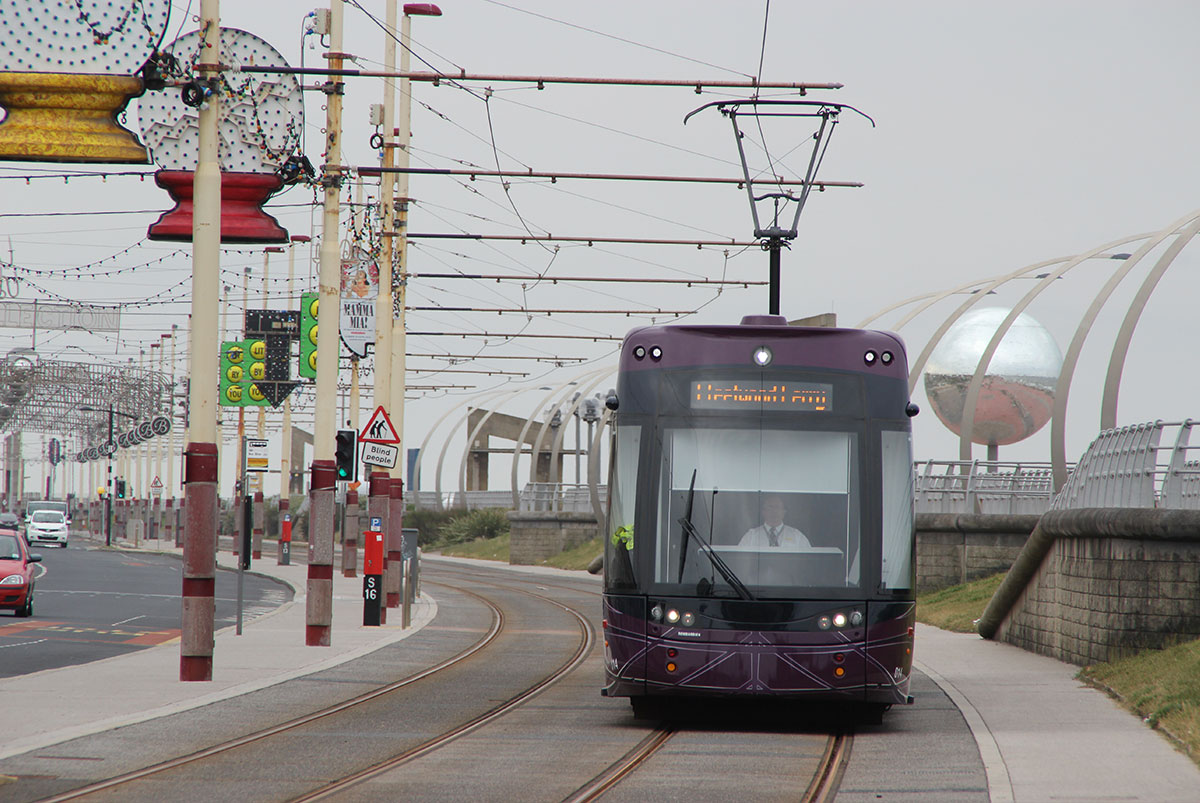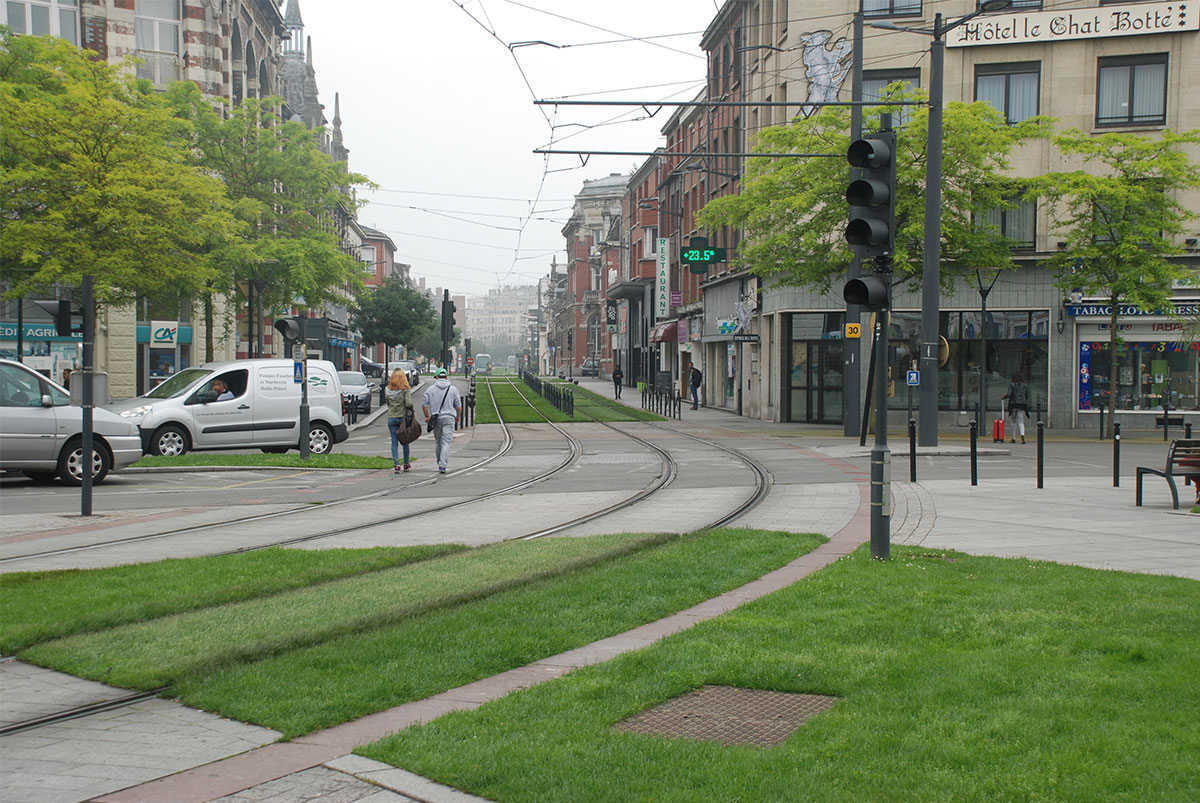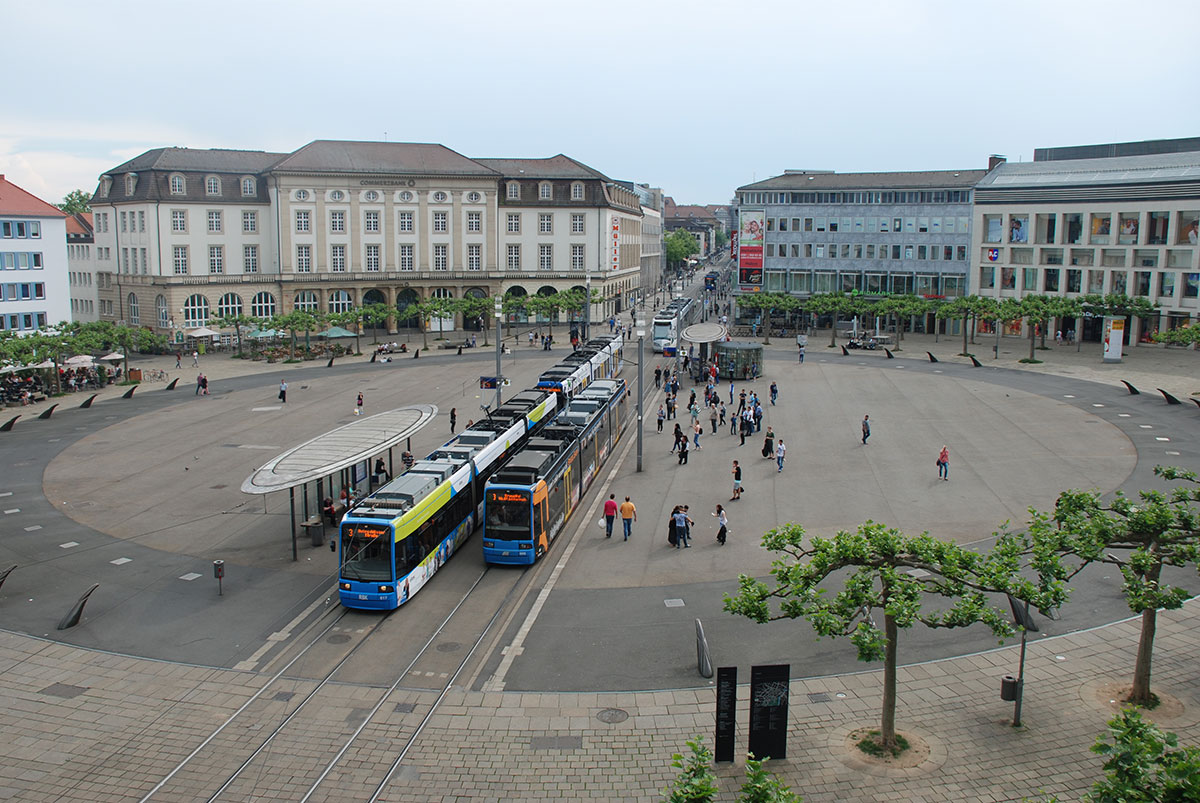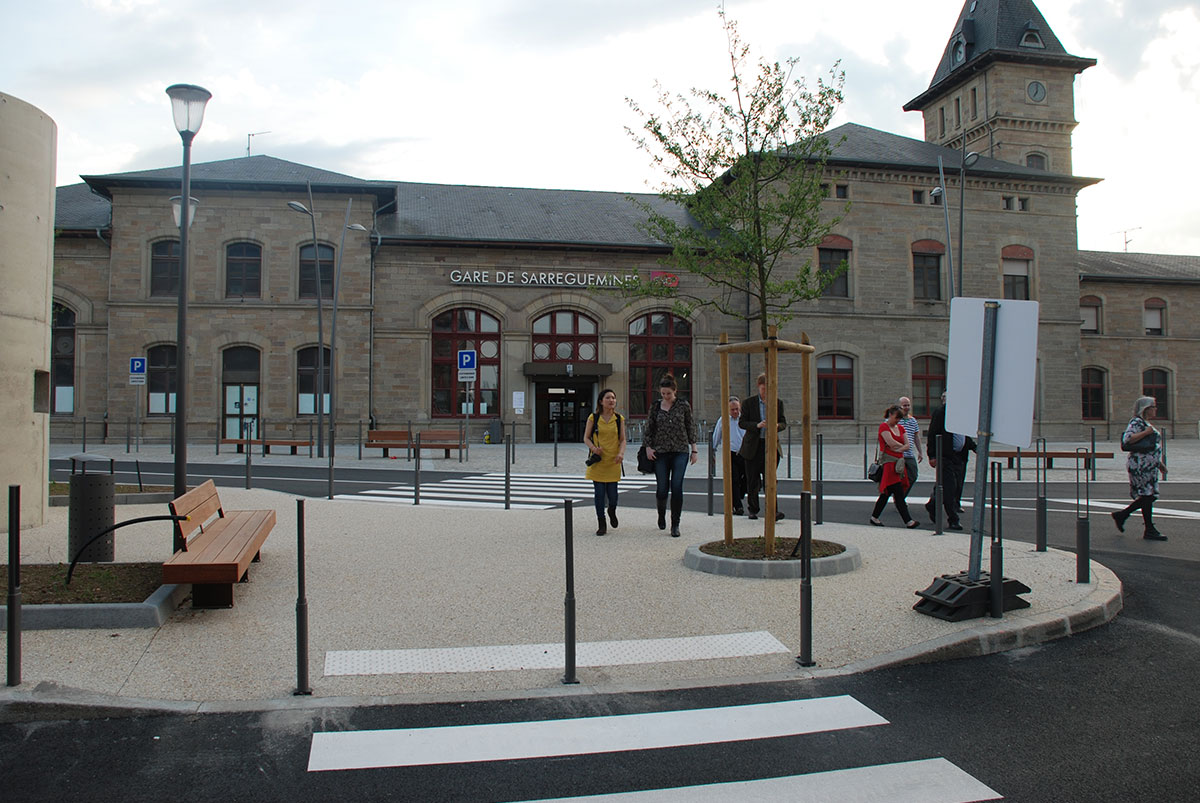
Blackpool tramway, UK. There is potential to link the newly-refurbished Blackpool tram to the national rail network, either with an extended tram system or tram-train along the South Fylde Line.
The €26.8m Sintropher project, led by The Bartlett’s School of Planning, shows how tram-based systems can connect cities and regions to improve prosperity.
Sintropher had a fascinating rationale, says Dr Robin Hickman, Reader in Transport and City Planning at The Bartlett School of Planning. “We wanted to look at the disparity between the main urban centres and the periphery – deprived communities, coastal towns like Blackpool – where it was very hard to make the case for public transport and ask: ‘how could we justify investing in high quality systems in these contexts?’”
Funded by the INTERREG IVB Programme, Sintropher ran for five years until 2014 with the aim of enhancing local and regional transport provision to, from and within five peripheral regions in North-West Europe: Valenciennes, France; Fylde Coast, UK; western West Flanders, Belgium; North Hesse, Germany; and Arnhem-Nijmegen, Netherlands. The project was extended in 2014 for a further two years to include Saar-Moselle, a France-Germany cross-border region; and eastern West Flanders, Belgium. In total Sintropher cost €26.8m and involved 16 partner agencies, with much of the funding invested in innovative tram-based projects.
It was the last project led by The Bartlett’s Professor Sir Peter Hall and was close to his heart. Hall was interested in those regions that don’t get public funding for transport, regions like Blackpool where he went to school. He had wanted to develop a project based on the systems he had seen in Kassel, Germany (one of Sintropher’s case studies), where the RegioTram service links all of surrounding urban centres and villages to the city’s mainline train system. He saw this as a great opportunity to help regenerate Blackpool, with transport acting as a catalyst for new development.

The Valenciennes tram, France. The streetscape is well landscaped and designed, so that the transport infrastructure adds to the urban environment.
While Hall was a supporter of big transport schemes like HS2 in the UK, says Hickman, who took over as lead on the Sintropher project, he believed that it was equally necessary to “irrigate the regions”. This meant that regional public transport networks had to be developed to provide links to the main high speed stations. There was no point in just putting in the HS2 rail link because all the benefit would go to the big urban centres, London, Birmingham and Manchester. But if you could also invest in light urban rail, the whole region benefits and that’s a contribution to reducing the disparity.
“I don’t think this is very well appreciated in [HS2] project planning and this leads to much criticism,” he says. In fact, Hickman believes the role of transport in improving our urban areas and quality of life is “completely underappreciated” within the current transport system in the UK. By contrast, the German and French systems, while not perfect, allow public transport to be funded for social goals, such as helping people to access employment and education or regenerating deprived communities. In the UK, investment is driven by perceived economic benefits and, within this, mostly time savings.

Kassel, Germany. The regional tram-train system has strengthened both the core of the city and the regional economy.
Credit: All images by Robin Hickman

The single-track system in Valenciennes serves deprived, former mining communities, higher income villages and the university.
Rail-based innovation
By focusing on light-rail-based transport, Sintropher looked for ways to make best use of existing infrastructure. And by putting the emphasis on pilot investments, it showed what could be done – often changing perceptions about what was previously assumed to be too expensive by municipal authorities. These included helping to finance aspects of the €150m scheme for the new Ligne 2 single-track, bi-directional tramway system in Valenciennes (single-track can provide high-quality services at lower capital cost compared with conventional double-track.)
On the Fylde Coast, Sintropher contributed to the €140m Blackpool Tramway upgrade to give state-of-the art European standards. This has been constructed and is operational. By 2015, Sintropher’s partners had used the project’s results to generate €340m in direct investment and an estimated €1bn – €1.5bn of potential leverage for follow-on investments. As a result, there has been a huge impact on the ground – and potentially in terms of social goals.
In addition to demonstration projects, Sintropher produced a review of the effects of light rail or tram-based projects, examining over 50 European cases during the last 20 years. A key finding was that transport infrastructure needs to be planned and implemented as part of an integrated spatial planning approach – without this, infrastructure investment can lack strategic direction.
Hickman says: “Additional work packages considered the effectiveness of project appraisal approaches, suggesting that we needed to move beyond a focus on cost-benefit analysis – and the importance of improving the journey experience when planning new projects.”

The French town of Sarreguemines now has an excellent tram-train link across the national border to Saarbrücken, Germany.
This was summed up by the Sintropher project team at a project conference in Brussels: “It is widely accepted that transport is having an increasing impact on regional and urban economic growth. The relationship is more than providing access and speedier linkage. Transport is no longer simply a way of getting from A to B; it is central to a place’s vitality, it can promote development in itself, and it is critical to participation in life. Also, the experience of the transport system, and its character and quality, can contribute to image, dynamism and attractiveness.”
While Sintropher’s wider longer-term impacts are yet to be seen, this shift in understanding of transport planning is crucial, especially in the UK, believes Hickman: “The Department of Transport should realise that public transport is needed in deprived areas, because otherwise you are either leaving people [in these regions] to poor travel experiences and living conditions or you are expecting them to move.
“I think that needs to change dramatically in the next 10 years. For example, these issues are central to developing a response to some of the reasons for Brexit – much of this is about inequity – and investment in public transport in the regions can give some assistance here.”
The School of Planning is one of the leading research-led planning schools in Europe, offering a creative and stimulating environment to study the form, planning, design and management of cities, and to shape their future. It is part of The Bartlett, UCL’s Faculty of the Built Environment. Find out more: ucl.ac.uk/bartlett/planning
